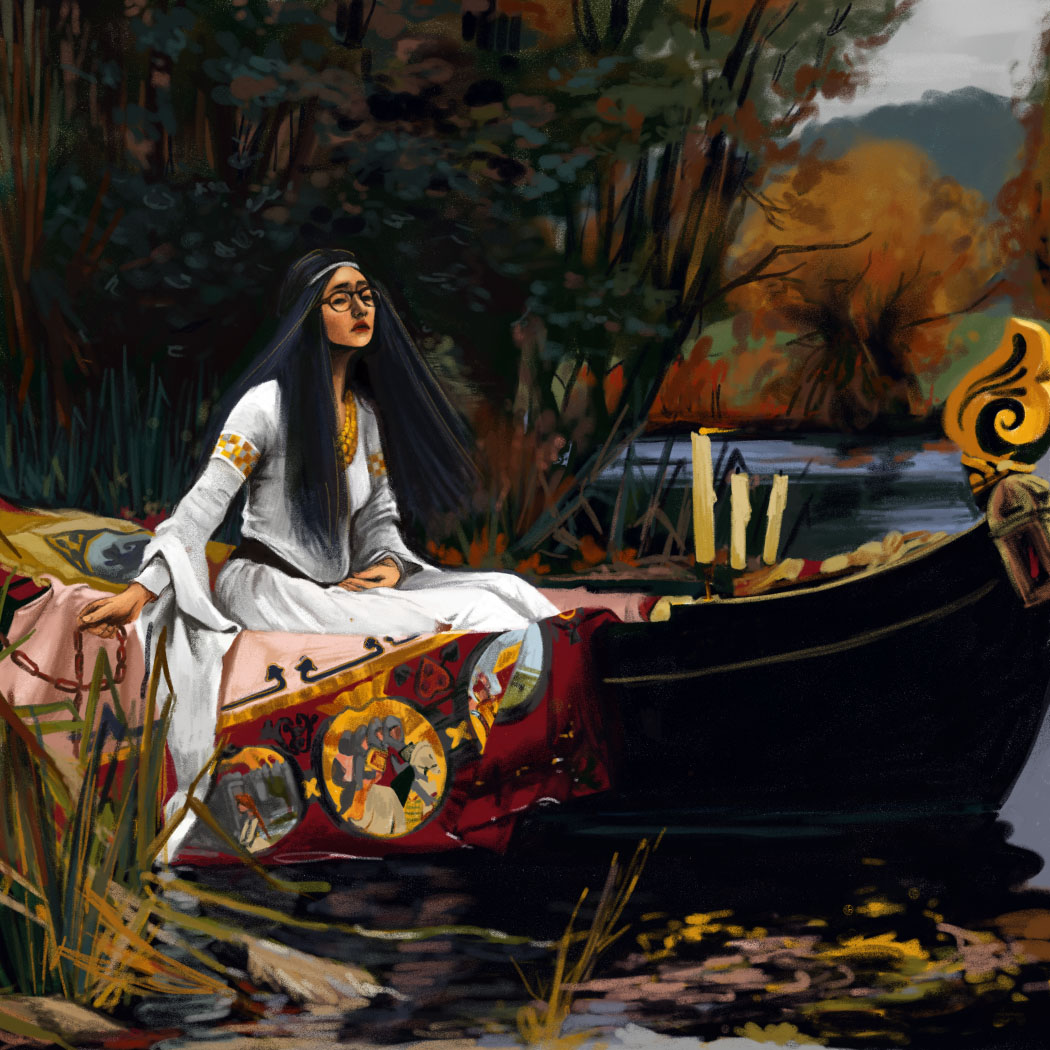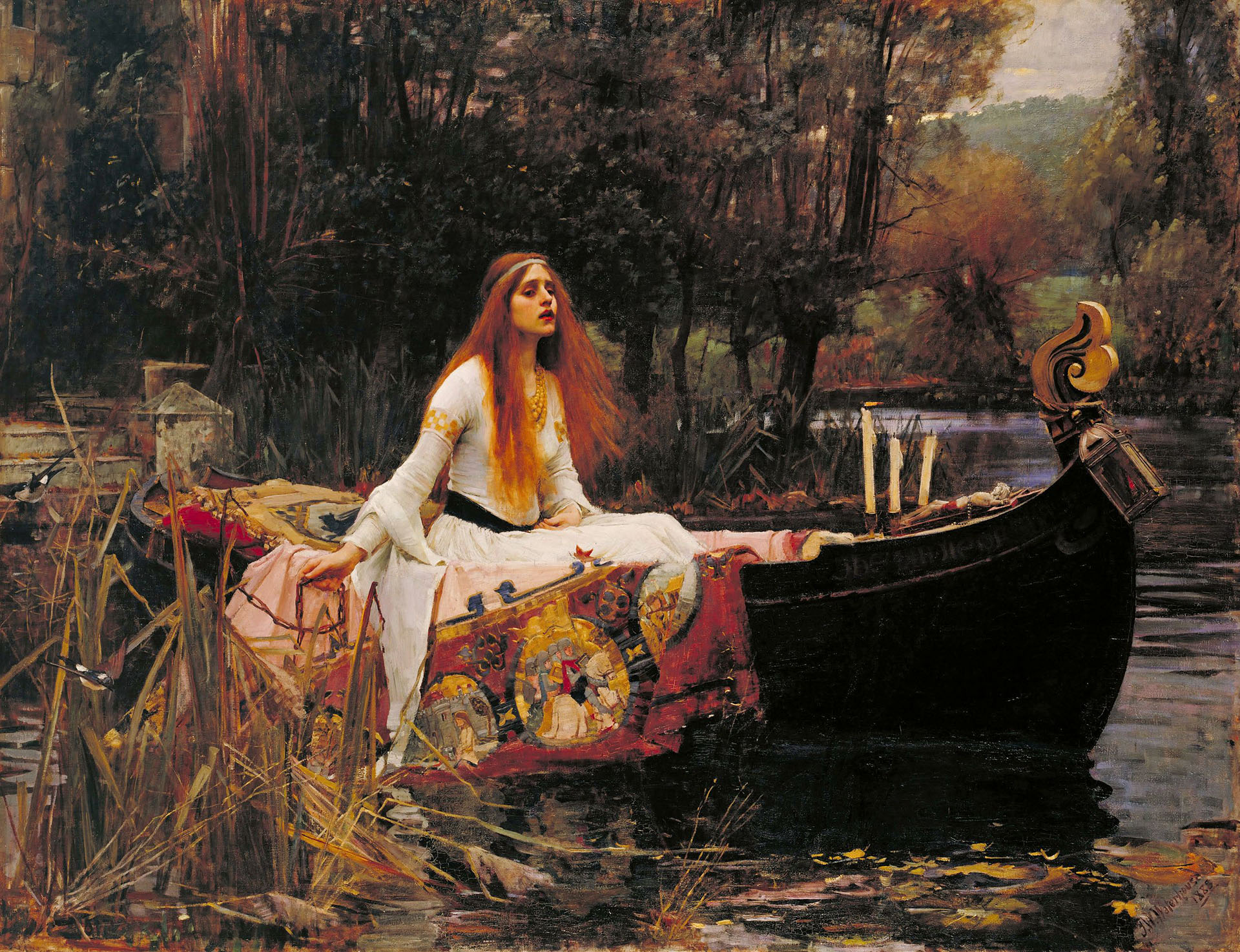59/100
The Lady of Shalott
-
Artist
John William Waterhouse
-
Year
1888
-
Culture
British
-
Date of Copy
It's my friend and minor obsession John William Waterhouse again! This might be his most iconic painting. It depicts the Lady of Shalott, a character from the King Arthur cycle. This scene is taken from the ending of a long poem that Alfred, Lord Tennyson wrote about her. (John William Waterhouse loved his literary allusions.)
The story goes that the Lady of Shalott was cursed to live in a tower by herself, where she wove on her loom. She could only look outside through a mirror's reflection or she'd be cursed. Unfortunately she caught a sight of hunky Lancelot passing by in the mirror reflection, and couldn't help herself from looking at him directly. The curse took effect (and the mirror, dramatically, crack'd from side to side!) She immediateley left the tower, bundled herself in a boat, and floated down to Camelot where she died. Pretty morbid! But in an aesthetic way. Because our patriarchal culture loves a beautifully suffering woman.
The book Women in the Picture dissects this painting, exploring how it reflects our culture's obsession with suffering damsels. In a way, the painting recognizes our pain, making it acceptable by glamorizing it. But it also makes it seem like suffering is our fate as women, that we're weak, and that the only good woman is non-threatening to the point that she's in pain. It's a lot to ponder. Because I recognize all that and agree with it, but at the same time, I too love this painting. It reflects my self indulgent teenage angst back to me and makes it pretty. I painted this at the end of the year, when I was feeling kind of burnt out and tired, and with this copy I got to dramatize that and process it. Yet again, I am confronted with the fact that art and human beings are complex.
One more point--this painting actually mostly works because the lady's hair and dress are the brightest points and blend togther into a big pale shape that draws your focus. My hair on the other hand is black. That change made my copy not as effective. It turns out that the exact red shade of her hair is essential to this picture's success.
Reference image is from [Wikipedia](https://en.wikipedia.org/wiki/The_Lady_of_Shalott_(painting). It's now in the Tate Britain in London.

